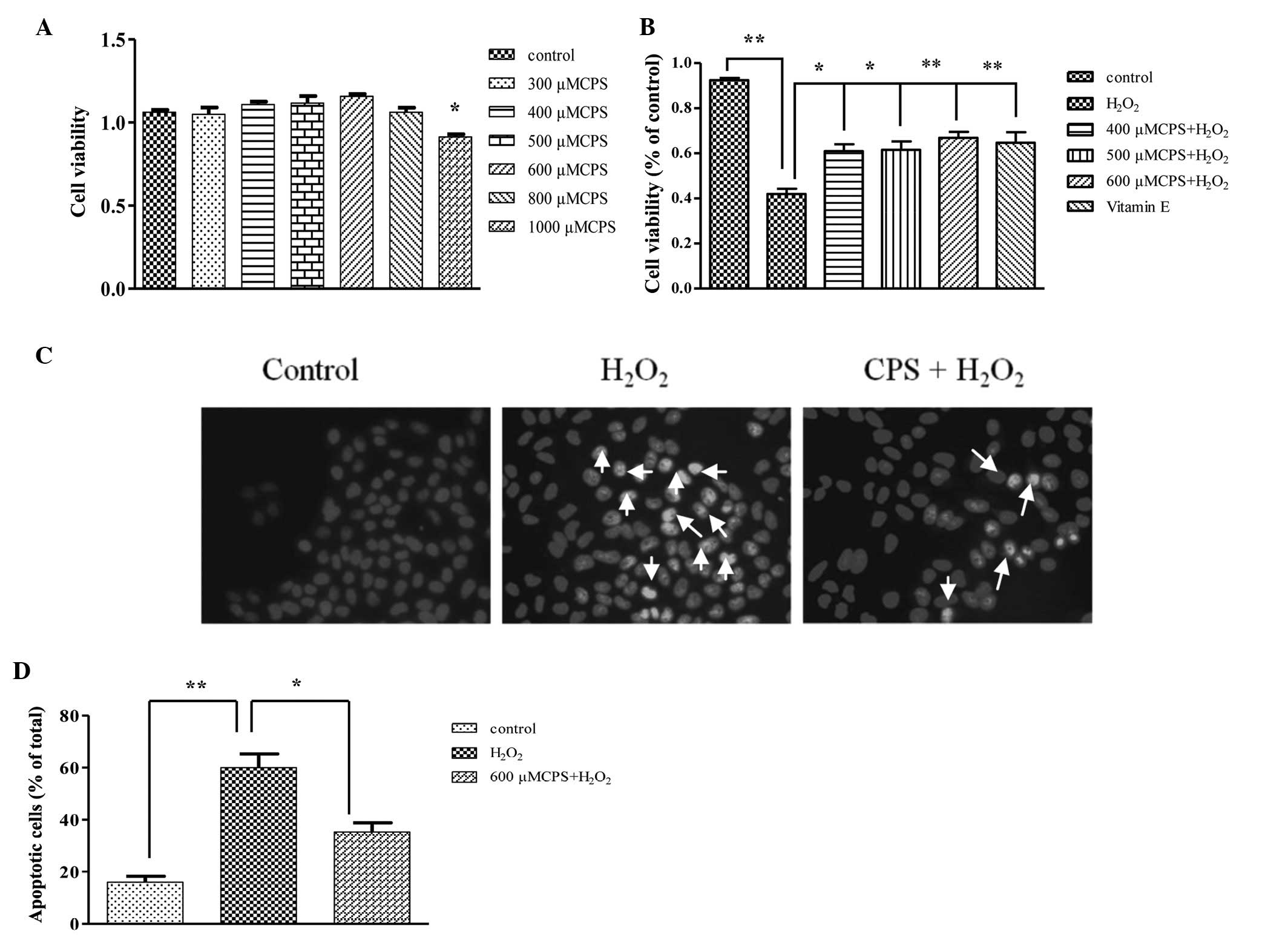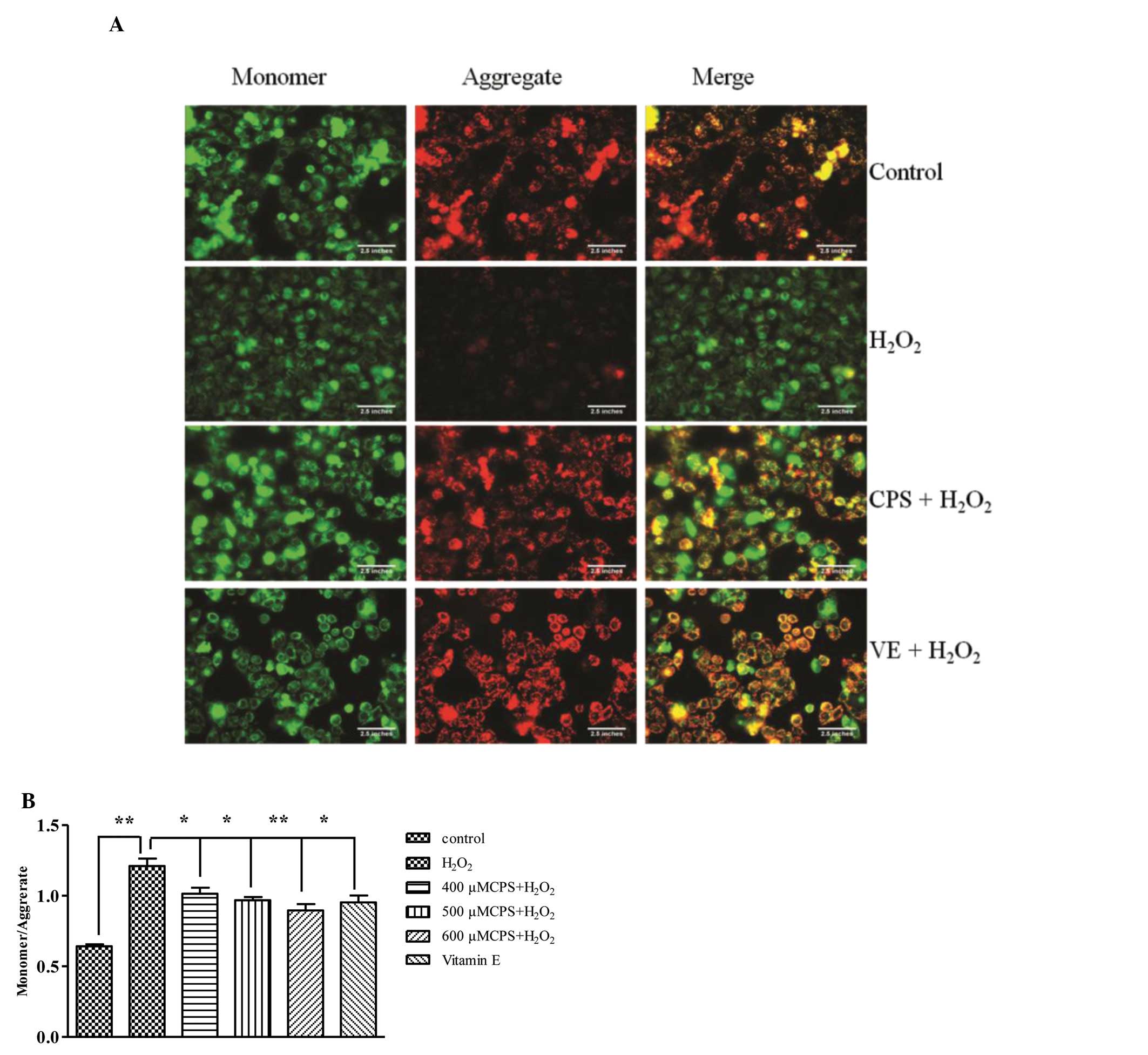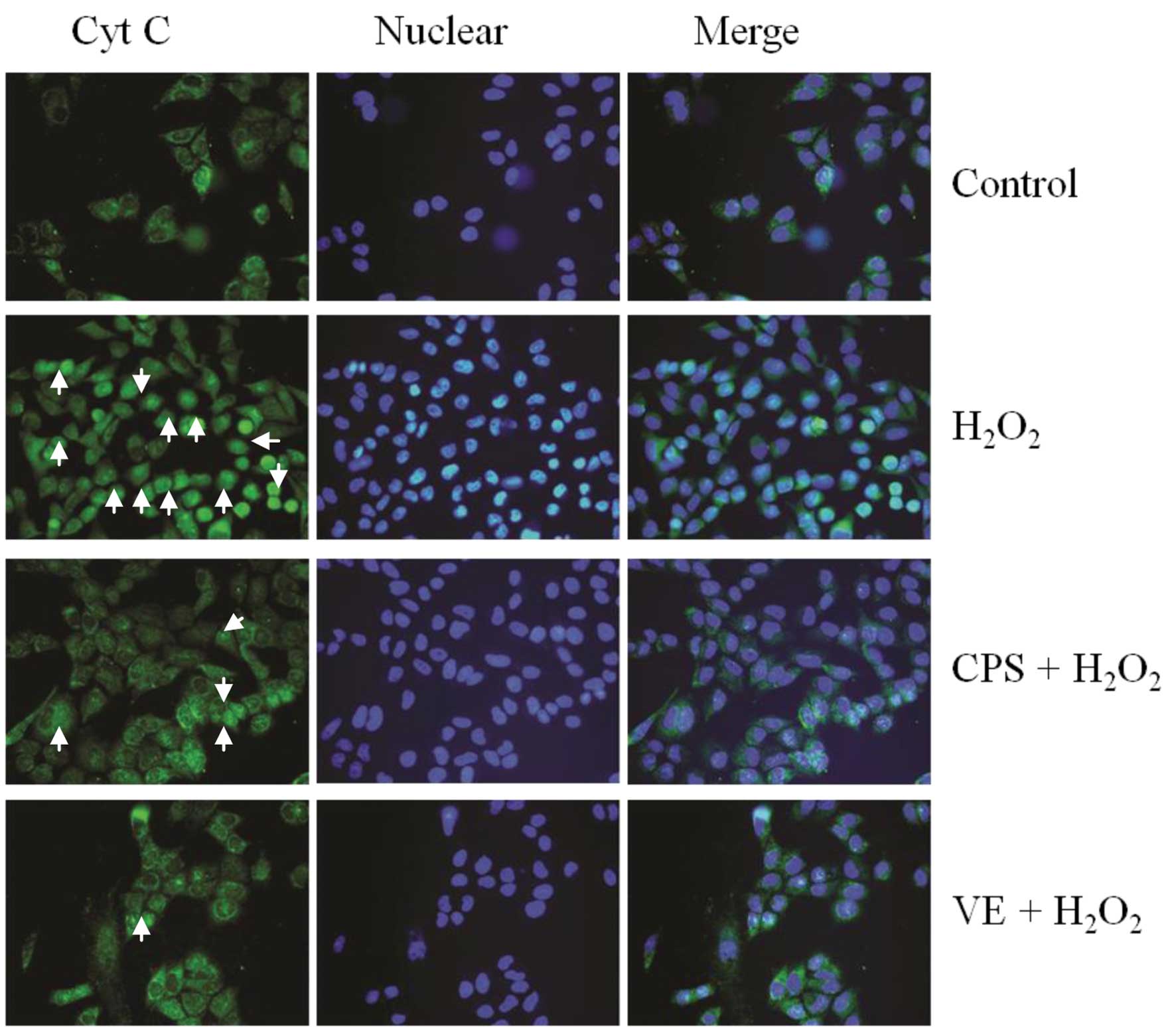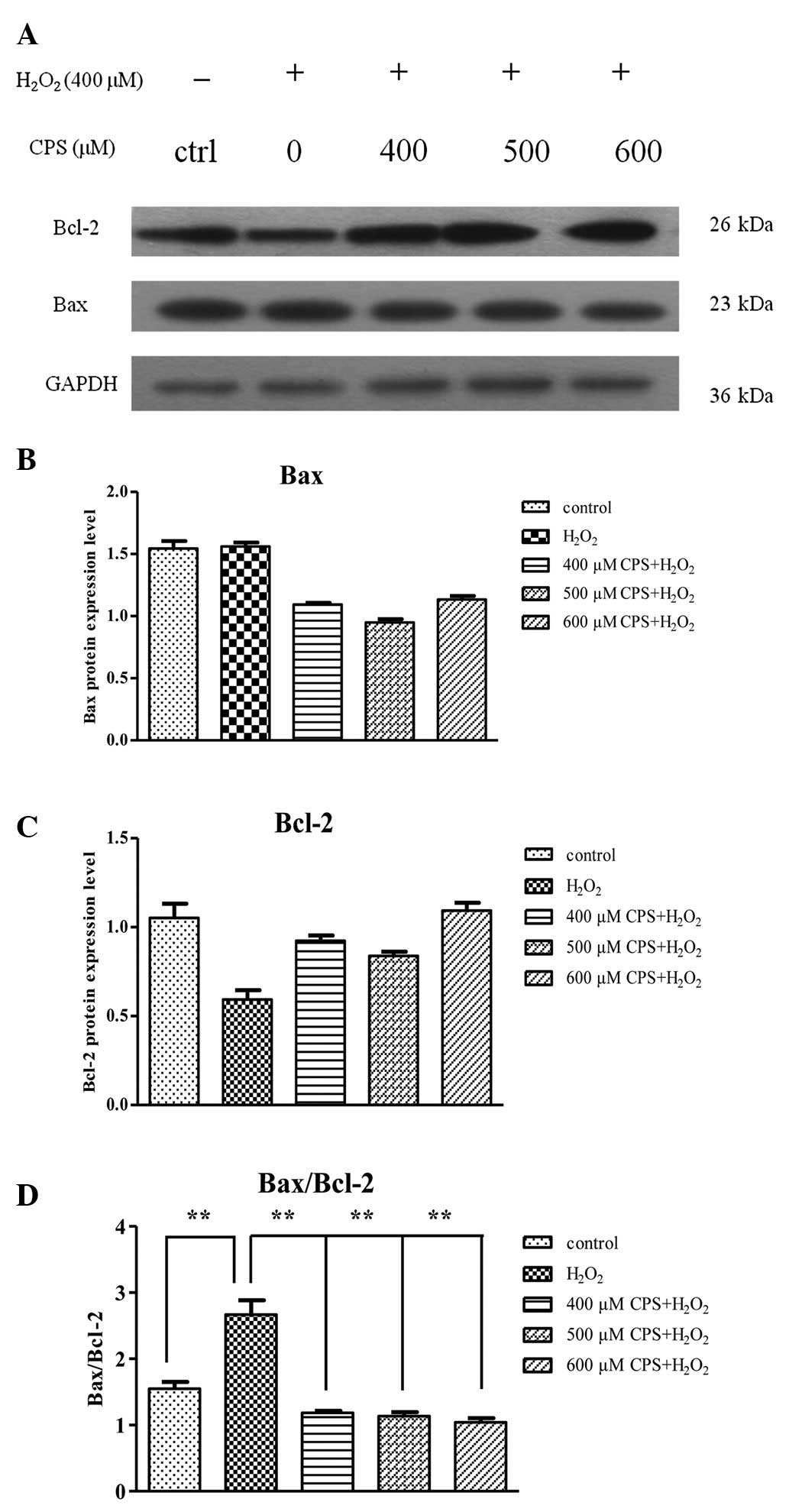|
1
|
Friedman SL: Liver fibrosis - from bench
to bedside. J Hepatol. 38(Suppl 1): S38–53. 2003. View Article : Google Scholar
|
|
2
|
Koek GH, Liedorp PR and Bast A: The role
of oxidative stress in non-alcoholic steatohepatitis. Clin Chim
Acta. 412:1297–1305. 2011. View Article : Google Scholar : PubMed/NCBI
|
|
3
|
Yan X, Zhou T, Tao Y, Wang Q, Liu P and
Liu C: Salvianolic acid B attenuates hepatocyte apoptosis by
regulating mediators in death receptor and mitochondrial pathways.
Exp Biol Med (Maywood). 235:623–632. 2010. View Article : Google Scholar : PubMed/NCBI
|
|
4
|
Park NS, Lee KS, Sohn HD, Kim DH, Lee SM,
Park E, Kim I, Je YH and Jin BR: Molecular cloning, expression, and
characterization of the Cu,Zn superoxide dismutase (SOD1) gene from
the entomopathogenic fungus Cordyceps militaris. Mycologia.
97:130–138. 2005. View Article : Google Scholar : PubMed/NCBI
|
|
5
|
Chen YJ, Shiao MS, Lee SS and Wang SY:
Effect of Cordyceps sinensis on the proliferation and
differentiation of human leukemic U937 cells. Life Sci.
60:2349–2359. 1997.
|
|
6
|
Xiao JH, Liang ZQ and Liu AY: Advances of
polysaccharides research and exploitation of anamorph and its
related fungi from Cordyceps. Yao Xue Xue Bao. 37:589–592. 2002.(In
Chinese).
|
|
7
|
Ohta Y, Lee JB, Hayashi K, Fujita A, Park
DK and Hayashi T: In vivo anti-influenza virus activity of an
immunomodulatory acidic polysaccharide isolated from Cordyceps
militaris grown on germinated soybeans. J Agric Food Chem.
55:10194–10199. 2007. View Article : Google Scholar : PubMed/NCBI
|
|
8
|
Nakamura K, Yamaguchi Y, Kagota S,
Shinozuka K and Kunitomo M: Activation of in vivo Kupffer cell
function by oral administration of Cordyceps sinensis in rats. Jpn
J Pharmacol. 79:505–508. 1999. View Article : Google Scholar : PubMed/NCBI
|
|
9
|
Kiho T, Ookubo K, Usui S, Ukai S and
Hirano K: Structural features and hypoglycemic activity of a
polysaccharide (CS-F10) from the cultured mycelium of Cordyceps
sinensis. Biol Pharm Bull. 22:966–970. 1999. View Article : Google Scholar : PubMed/NCBI
|
|
10
|
Koh JH, Kim JM, Chang UJ and Suh HJ:
Hypocholesterolemic effect of hot-water extract from mycelia of
Cordyceps sinensis. Biol Pharm Bull. 26:84–87. 2003. View Article : Google Scholar : PubMed/NCBI
|
|
11
|
Yamaguchi Y, Kagota S, Nakamura K,
Shinozuka K and Kunitomo M: Antioxidant activity of the extracts
from fruiting bodies of cultured Cordyceps sinensis.
Phytother Res. 14:647–649. 2000. View Article : Google Scholar : PubMed/NCBI
|
|
12
|
Li SP, Su ZR, Dong TT and Tsim KW: The
fruiting body and its caterpillar host of Cordyceps sinensis
show close resemblance in main constituents and anti-oxidation
activity. Phytomedicine. 9:319–324. 2002.PubMed/NCBI
|
|
13
|
Li SP, Zhao KJ, Ji ZN, Song ZH, Dong TT,
Lo CK, Cheung JK, Zhu SQ and Tsim KW: A polysaccharide isolated
from Cordyceps sinensis, a traditional Chinese medicine,
protects PC12 cells against hydrogen peroxide-induced injury. Life
Sci. 73:2503–2513. 2003.
|
|
14
|
Li XT, Li HC, Li CB, Dou DQ and Gao MB:
Protective effects on mitochondria and anti-aging activity of
polysaccharides from cultivated fruiting bodies of Cordyceps
militaris. Am J Chin Med. 38:1093–1106. 2010. View Article : Google Scholar : PubMed/NCBI
|
|
15
|
Zamzami N, Marchetti P, Castedo M, Zanin
C, Vayssiere JL, Petit PX and Kroemer G: Reduction in mitochondrial
potential constitutes an early irreversible step of programmed
lymphocyte death in vivo. J Exp Med. 181:1661–1672. 1995.
View Article : Google Scholar : PubMed/NCBI
|
|
16
|
Preston TJ, Abadi A, Wilson L and Singh G:
Mitochondrial contributions to cancer cell physiology: potential
for drug development. Adv Drug Deliv Rev. 49:45–61. 2001.
View Article : Google Scholar : PubMed/NCBI
|
|
17
|
Cadenas E and Davies KJ: Mitochondrial
free radical generation, oxidative stress, and aging. Free Radic
Biol Med. 29:222–230. 2000.PubMed/NCBI
|
|
18
|
Raha S and Robinson BH: Mitochondria,
oxygen free radicals, disease and ageing. Trends Biochem Sci.
25:502–508. 2000. View Article : Google Scholar : PubMed/NCBI
|
|
19
|
Rasola A and Bernardi P: The mitochondrial
permeability transition pore and its involvement in cell death and
in disease pathogenesis. Apoptosis. 12:815–833. 2007. View Article : Google Scholar : PubMed/NCBI
|
|
20
|
Wang H, Xu Y, Yan J, Zhao X, Sun X, Zhang
Y, Guo J and Zhu C: Acteoside protects human neuroblastoma SH-SY5Y
cells against beta-amyloid-induced cell injury. Brain Res.
1283:139–147. 2009. View Article : Google Scholar : PubMed/NCBI
|
|
21
|
Naval MV, Gomez-Serranillos MP, Carretero
ME and Villar AM: Neuroprotective effect of a ginseng (Panax
ginseng) root extract on astrocytes primary culture. J
Ethnopharmacol. 112:262–270. 2007. View Article : Google Scholar : PubMed/NCBI
|
|
22
|
Hong H and Liu GQ: Protection against
hydrogen peroxide-induced cytotoxicity in PC12 cells by
scutellarin. Life Sci. 74:2959–2973. 2004. View Article : Google Scholar : PubMed/NCBI
|
|
23
|
Liu CS, Chen NH and Zhang JT: Protection
of PC12 cells from hydrogen peroxide-induced cytotoxicity by
salvianolic acid B, a new compound isolated from Radix Salviae
miltiorrhizae. Phytomedicine. 14:492–497. 2007. View Article : Google Scholar : PubMed/NCBI
|
|
24
|
Guizani N, Waly MI, Ali A, Al-Saidi G,
Singh V, Bhatt N and Rahman MS: Papaya epicarp extract protects
against hydrogen peroxide-induced oxidative stress in human SH-SY5Y
neuronal cells. Exp Biol Med (Maywood). 236:1205–1210. 2011.
View Article : Google Scholar : PubMed/NCBI
|
|
25
|
Hwang JM, Cho JS, Kim TH and Lee YI:
Ellagic acid protects hepatocytes from damage by inhibiting
mitochondrial production of reactive oxygen species. Biomed
Pharmacother. 64:264–270. 2010. View Article : Google Scholar : PubMed/NCBI
|
|
26
|
Rhee SG, Bae YS, Lee SR and Kwon J:
Hydrogen peroxide: a key messenger that modulates protein
phosphorylation through cysteine oxidation. Sci STKE.
2000:pe12000.PubMed/NCBI
|
|
27
|
Park MT, Kim MJ, Kang YH, Choi SY, Lee JH,
Choi JA, Kang CM, Cho CK, Kang S, Bae S, Lee YS, Chung HY and Lee
SJ: Phytosphingosine in combination with ionizing radiation
enhances apoptotic cell death in radiation-resistant cancer cells
through ROS-dependent and -independent AIF release. Blood.
105:1724–1733. 2005. View Article : Google Scholar : PubMed/NCBI
|
|
28
|
Bras M, Queenan B and Susin SA: Programmed
cell death via mitochondria: different modes of dying. Biochemistry
(Mosc). 70:231–239. 2005. View Article : Google Scholar : PubMed/NCBI
|
|
29
|
Loeffler M and Kroemer G: The
mitochondrion in cell death control: certainties and incognita. Exp
Cell Res. 256:19–26. 2000. View Article : Google Scholar : PubMed/NCBI
|
|
30
|
Allen RT, Pai J, Bovard K, Hunter WJ 3rd
and Agrawal DK: Immunogold staining for Bcl-xL and morphological
analysis of rat and human vascular smooth muscle cells undergoing
apoptosis induced by c-myc or staurosporine. Scanning. 20:207–208.
1998.
|
|
31
|
Cory S and Adams JM: The Bcl2 family:
regulators of the cellular life-or-death switch. Nat Rev Cancer.
2:647–656. 2002. View
Article : Google Scholar : PubMed/NCBI
|
|
32
|
Song XD, Zhang JJ, Wang MR, Liu WB, Gu XB
and Lv CJ: Astaxanthin induces mitochondria-mediated apoptosis in
rat hepatocellular carcinoma CBRH-7919 cells. Biol Pharm Bull.
34:839–844. 2011. View Article : Google Scholar : PubMed/NCBI
|
|
33
|
Adams JM and Cory S: The Bcl-2 protein
family: arbiters of cell survival. Science. 281:1322–1326. 1998.
View Article : Google Scholar : PubMed/NCBI
|
|
34
|
Yang SH, Chien CM, Lu MC, Lin YH, Hu XW
and Lin SR: Up-regulation of Bax and endonuclease G, and
down-modulation of Bcl-XL involved in cardiotoxin III-induced
apoptosis in K562 cells. Exp Mol Med. 38:435–444. 2006. View Article : Google Scholar : PubMed/NCBI
|















